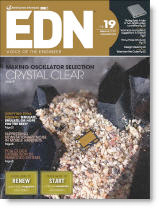 DAC is coming up and all those marketing engines are revving up to a fever pitch waiting for the green light. But who should they pitch to? Customers, obviously, you eventually have to win the ground war. But what about the air war. There isn’t really a press following EDA any more, but there are lots of us bloggers and some newsletters, and without really planning it we’ve become one of the channels that potentially marketing can use to reach their customers.
DAC is coming up and all those marketing engines are revving up to a fever pitch waiting for the green light. But who should they pitch to? Customers, obviously, you eventually have to win the ground war. But what about the air war. There isn’t really a press following EDA any more, but there are lots of us bloggers and some newsletters, and without really planning it we’ve become one of the channels that potentially marketing can use to reach their customers.
But it’s a new game and nobody knows how to play yet. I’ve been approached by several PR agencies and marketing folk about product announcements, interviews and so on. Individual product announcements are not interesting to me, and I’m assuming you readers wouldn’t want to wade through them all anyway. There are other places for that. But product announcements in aggregate are interesting: What are the new trends? Which new areas are hot? Which new startups are interesting in those areas? What hard problems are getting cracked?
It is a major challenge for a smaller company to get its message out in this brave new world. Big companies like Cadence and Synopsys have their own internal tradeshows and regularly meet customer executives to brief them. Somebody commented on one of my blog entries about a TSMC engineer saying “I don’t go to DAC any more; if I want to talk to an EDA company I make them come to us.” That’s fine as long as you know about the company, but if you take that attitude you’ll never find out early about hot new technology that might turn out to be important.
Remember Bill Joy’s law: no matter where you are, the smartest people are somewhere else. You just don’t know what is going to turn out to be important, so you need to look at it all. But it is increasingly difficult to immerse yourself in the stream of raw information that might allow you to spot something. In it’s heyday, when both Richard Goering and Mike Santarini and more were there, not much happened in EDA that you’d miss if you read EEtimes each week. Now, not so much.
That’s one reason that, for the time being, I think DAC remains strong. It’s the only place for that kind of serendipity. Everyone has a story of some major customer finding them by chance at DAC. Not the big companies of course (“Synopsys. I didn’t know you had any synthesis products!") but startups. When I was at VaST we acquired Intel as a customer (or “a large Santa Clara based microprocessor company” since I don’t think Intel likes anyone claiming them as a customer) when a couple of engineers happened to pass by the booth.
This is the first DAC I’ve been to where I’m officially classified as "press." I get in for free as press, I get invited to various press/analyst events (but not all of them), I get invited to various other events since I’m on the press list. "I have seen the future and it is us." In some ways it feels like EDA has been abandoned by the traditional press so we’d better just do it ourselves, and with our deeper knowledge do it better. I don’t know if I succeed but that’s certainly part of what I try and do on this blog.
It’s not clear what the channels to reach customers are going to morph into. To tell the truth, since it is so unmeasurable, it was always unclear even how much EDA customers were reading the right articles in EEtimes versus us EDA insiders keeping an eye on the competition. I’m not the only person musing on this subject, of course. There’s a panel session at DAC about blogging (I wasn’t invited though). Here is a discussion between Ed Lee and Sean Murphy about it. Peggy Aycinena was already on the case a couple of years ago.
Of course what is happening in the EDA trade press is mirroring what is going on in the wider world of journalism in general. Even the New York Times is struggling financially and probably will not make it in its present form. The San Francisco Chronicle’s days are almost certainly limited. Time and Newsweek are hemorrhaging subscribers. Nobody knows what anyone will pay for (except the Economist, which seems to have some unique hard to reproduce formula). If it is hard to get your message out in EDA, it is also getting harder to get it out if you are Toyota or Colgate too. Nobody watches the same channels, they all have DVRs and skip ads, they don’t read so many paper magazines. When everyone is watching YouTube and updating their Facebook wall, they are not learning about the existence of new products, even of ones they’d love to discover.
